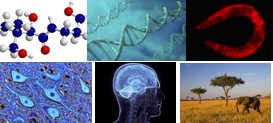
It has sometimes been said that “Boltzmann and Darwin cannot be right at the same time.”
Mmm… I beg to differ.
Biophysics aims at explaining biological phenomena exactly with the same laws that apply to the rest of the Universe. The progressive discovery of similitudes between physical phenomena, notably in mechanics, energetics, electricity, and corresponding phenomena occurring inside living cells, has been the important motor of the recent, increasing interest in biophysics.
Following such great scientist like D’Arcy Thompson, J. S. B. Haldane, Archibald Hill, and the more recent Knut Schmidt-Nielsen, Steven Vogel, J. C. Pennycuick and few others, we think that biophysics is crucial in understanding how living organisms must conform to the inevitable bounds imposed by gravity, light, temperature, atmosphere, oceans of the Earth, and by the more general constraints deriving from such life-setting variables as the water phase diagram, oxygen diffusivity, molecular elasticity, to name just a few.
The physics inherent to living systems is immense and challenging. Where a physicist seeks mathematical rigor and experimental repeatability under extremely well controlled conditions, the biologist rather seeks inductive proof, statistical correlations, and performs hugely complex experiments with a whole bunch of competing (and often ill-known) free parameters. Just because of such complementary approaches, the more one delves into the realm of biophysics, the more interesting questions and puzzling connections are there, waiting to be uncovered.
It is true that physics makes today available to biology its most advanced technologies, e.g. super-resolution imaging, atomic-force microscopy, or magnetic resonance spectroscopy. However, with a characteristic simplicity that has since long been lost in most other areas of physics, also simple experiments assembled in the backyard of the laboratory, or crystal-clear pieces of non-quantum, non-relativistic theory, or even a back-of-the-envelope calculation of a dimensionless number, can reveal crucial information about the living. Far from being a limitation, this represents instead a great advantage and a fascinating opportunity for young scientists.
My name is Fabrizio Cleri. I am professor of physics in the University of Lille, France, and director of the Physics Division at the Institute for Electronics and Nanotechnology (IEMN) of the French CNRS.
This is my personal website, and I take full responsibility for its contents and the opinions here expressed.
The official IEMN website can be found at : www.iemn.fr
